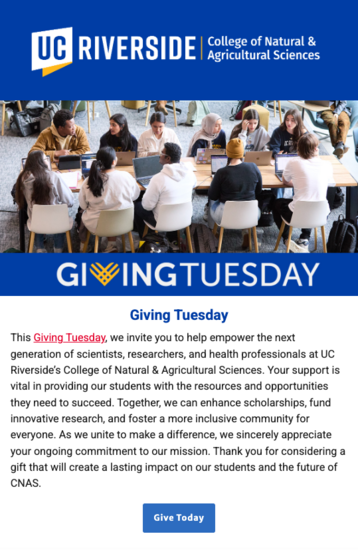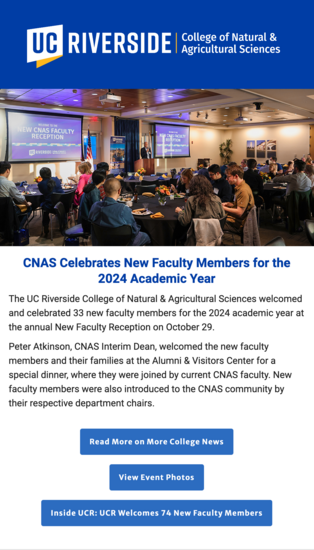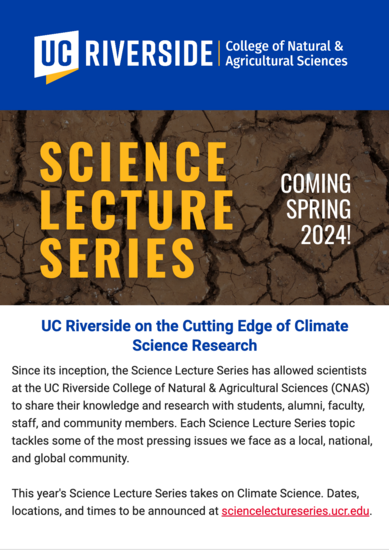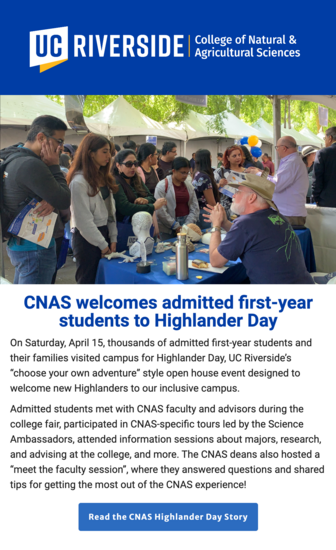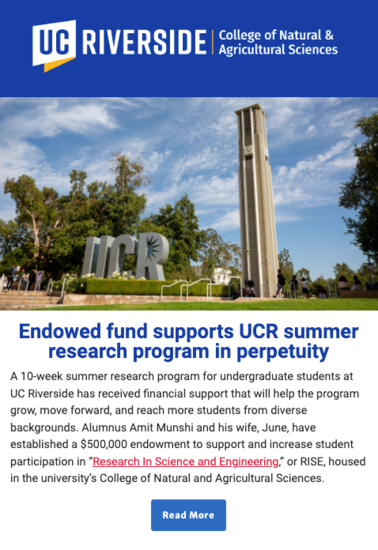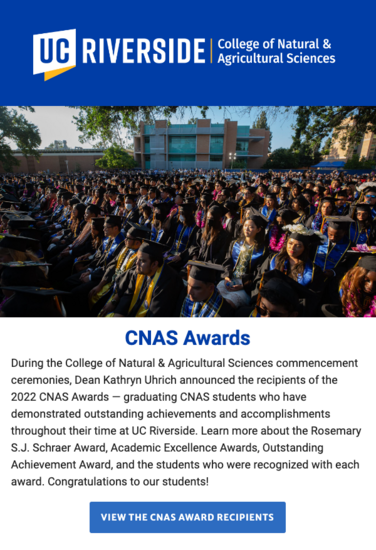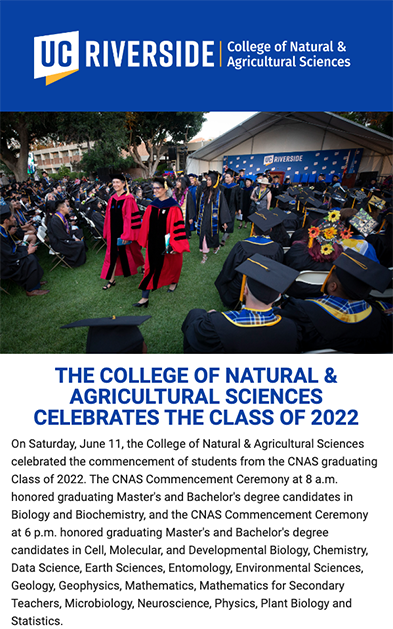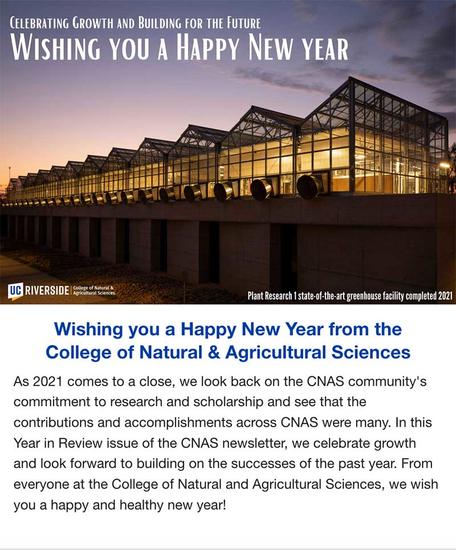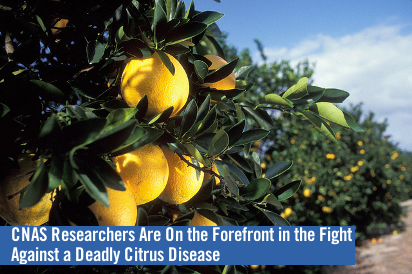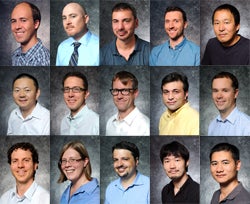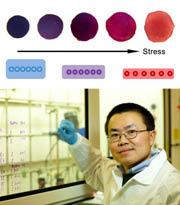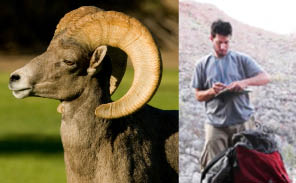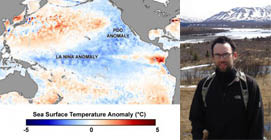2025 Newsletters
-
CNAS Newsletter December 17, 2025
December 17, 2025
-
CNAS Newsletter November 24, 2025
November 24, 2025
-
CNAS Newsletter: October 23, 2025
October 23, 2025
-
CNAS Newsletter September 25, 2025
September 25, 2025
-
CNAS Newsletter: August 27, 2025
August 27, 2025
-
CNAS Newsletter: July 30, 2025
July 30, 2025
-
CNAS Newsletter: Commencement Edition | June 18, 2025
June 18, 2025
-
CNAS Newsletter: June 12, 2025
June 12, 2025
-
CNAS Newsletter: May 22, 2025
May 22, 2025
-
CNAS Newsletter: April 23, 2025
April 23, 2025
-
CNAS Newsletter: March 20, 2025
March 20, 2025
-
CNAS Newsletter: February 26, 2025
February 26, 2025
-
CNAS Newsletter: January 28, 2025
January 28, 2025
2024 Newsletters
-
CNAS Newsletter: December 18, 2024
December 18, 2024
-
CNAS Newsletter: November 27, 2024
November 27, 2024
-
CNAS Newsletter: October 31, 2024
October 31, 2024
-
CNAS Newsletter: September 23, 2024
September 23, 2024
-
CNAS Newsletter: August 27, 2024
August 27, 2024
-
CNAS Newsletter: July 30, 2024
July 30, 2024
-
CNAS Newsletter: Commencement Edition | June 21, 2024
June 21, 2024
-
CNAS Newsletter: June 13, 2024
June 13, 2024
-
CNAS Newsletter: May 22, 2024
May 22, 2024
-
CNAS Newsletter: April 25, 2024
April 25, 2024
-
CNAS Newsletter: March 19, 2024
March 19, 2024
-
CNAS Newsletter: February 22, 2024
February 22, 2024
-
CNAS Newsletter: January 31, 2024
January 31, 2024
2023 Newsletters
-
CNAS Newsletter: Year in Review Issue | December 28, 2023
December 28, 2023
-
CNAS Newsletter: December 20, 2023
December 20, 2023
-
CNAS Newsletter: November 28, 2023
November 28, 2023
-
CNAS Newsletter: October 31, 2023
October 31, 2023
-
CNAS Newsletter: September 25, 2023
September 25, 2023
-
CNAS Newsletter: August 31, 2023
August 31, 2023
-
CNAS Newsletter: July 27, 2023
July 27, 2023
-
CNAS Newsletter: Commencement Edition | June 29, 2023
June 29, 2023
-
CNAS Newsletter: June 13, 2023
June 13, 2023
-
CNAS Newsletter: May 23, 2023
May 23, 2023
-
CNAS Newsletter: April 18, 2023
April 18, 2023
-
CNAS Newsletter: March 21, 2023
March 21, 2023
-
CNAS Newsletter: February 13, 2023
February 13, 2023
-
CNAS Newsletter: January 12, 2023
January 12, 2023
2022 Newsletters
-
CNAS Newsletter: Year in Review Issue | December 28, 2022
December 28, 2022
-
CNAS Dean's Holiday Greeting December 27, 2022
December 27, 2022
-
CNAS Newsletter November 29, 2022
November 29, 2022
-
CNAS Newsletter October 31, 2022
October 31, 2022
-
CNAS Newsletter September 26, 2022
September 26, 2022
-
CNAS Newsletter August 26, 2022
August 26, 2022
-
CNAS Newsletter July 29, 2022
July 29, 2022
-
CNAS Newsletter: Commencement Edition | June 30, 2022
June 30, 2022
-
CNAS Newsletter June 16, 2022
June 16, 2022
-
CNAS Newsletter May 27, 2022
May 27, 2022
-
CNAS Newsletter May 16, 2022
May 16, 2022
-
CNAS Newsletter April 18, 2022
April 18, 2022
-
CNAS Newsletter April 11, 2022
April 11, 2022
-
CNAS Newsletter March 31, 2022
March 31, 2022
2021 Newsletters
-
CNAS Newsletter: Year in Review Issue, December 28, 2021
Year in Review Issue
December 28, 2021 -
CNAS Dean's Holiday Greeting December 22, 2021
Dean's Holiday Greeting - December 22, 2021
- CNAS Newsletter November 15, 2021
- CNAS Newsletter October 29, 2021
- CNAS Newsletter September 28, 2021
- CNAS Newsletter August 6, 2021
- CNAS Newsletter May 21, 2021
- CNAS Newsletter March 12, 2021
- CNAS Newsletter February 10, 2021
- CNAS Newsletter January 12, 2021
2020 Newsletters
-
CNAS Newsletter: Holiday and Year in Review Issue, December 22, 2020
CNAS Newsletter: Holiday and Year in Review Issue, December 22, 2020
View Newsletter in your browser
- CNAS Newsletter November 12, 2020
- CNAS Newsletter October 22, 2020
- CNAS Newsletter October 5, 2020
- CNAS Newsletter September 17, 2020
- CNAS Newsletter September 3, 2020
- CNAS Newsletter August 20, 2020
Older Newsletters
Please note that most links have expired.
- Winter 2019: Dean's Newsletter
- Spring 2019: First Generation Science
- 2018: A Year of Milestones
-
2017: A Year of Growth
With the recent discovery of Huanglongbing (HLB) in Riverside, a disease that has decimated citrus trees in Florida, CNAS faculty have been working with government and industry officials to detect and fight the disease while pioneering new ways to treat infected trees and prevent HLB's spread.
Researchers Honored for Patents and Innovations
Four CNAS Faculty Named to Most Highly Cited List
Meet the 2017-18 Student Science Ambassadors
Highlights of National and International Faculty Honors
CNAS Alumni Arthur Riggs, PhD ’61 and John Leonard, PhD ’78 Honored for Their Career Impact and Achievements
Chemistry Professor Cynthia K. Larive Named UCR Provost
Three CNAS Faculty Among Those Chosen for NSF Early Career Awards
Distinguished Faculty Installed in Endowed ChairsSPRING SCIENCE LECTURE SERIES TO FOCUS ON GENE EDITING
With the genome editing tool CRISPR-Cas9 all the buzz of the science world, CNAS will host four lectures kicking off April 5 exploring the applications and challenges of this new technology as it relates to humans, plants, microbiology and ethics.ANOTHER PROLIFIC YEAR FOR RESEARCH BREAKTHROUGHS
From the effect of dark matter on galaxy rotations to the extinction of a songbird species and what it tells us about global warming, read highlights of published papers, grants, discoveries, and breakthroughs led by CNAS faculty.VIDEO: VISIT THE UCR BOTANIC GARDENS
-
The CNAS Report, Winter 2016
W I N T E R 2 0 1 6
Notes from College Building North
This is my first — and quite possibly my last — message to you from College Building North. Don't get me wrong — I plan to be here a long time; but when I arrived at UCR to serve as CNAS dean in January, it quickly became clear that the old saying is true: "Location, location, location." While our parking situation is the envy of everyone on campus, College Building North's fringe-of-campus location does not serve the mission of the dean's office well. That mission is multi-faceted, of course, but at its heart is a responsibility to serve our faculty. To do this, we are moving to the near-center of campus in the weeks ahead and invite you to visit us in our new quarters on the second floor of the Geology Building.
As you will see in this newsletter and in other stories on our website, our faculty and students continue to impress with their research, teaching and accomplishments. Not only did we add 30 new scientist/scholars to our ranks this past fall, we have Mark S. Alber, Vincent J. Duncan Family Professor of Applied Mathematics at the University of Notre Dame, joining us in June. He will become part of a distinguished cohort that includes Professors Julia Bailey-Serres and Yadong Yin, who were recently named to Reuters' list of the most influential scientists in the world. Congratulations go out to them and to Tracy Kahn, curator of UCR's Citrus Variety Collection, who was recently named Givaudan Endowed Chair. Sadly, we also report on our recent loss of two emeritus faculty members. We all owe the late Professors Bruce Chalmers and Earl Oatman a debt of gratitude for their roles in the success of our students, our college and our university.
While the Student Success Stories section of our website is bursting with good news, we are proud to recognize two most-recent accomplishments. Ph.D. candidate Eleinis Avila-Lovera has been selected for a U.S. Agency for International Development fellowship and will work with the Universidad Central de Venezuela to study cultivating cacao in an agroforestry system. Fourth-year undergraduate physics major Connor Richards, who serves as president of the CNAS Science Ambassadors, is the first UCR student to be awarded the Gates Cambridge Scholarship, which Vice Provost of Undergraduate Education Steven Brint called, ". . . the most prestigious award for graduate study that any UCR undergraduate has ever won."
It's an exciting time to be part of CNAS and I look forward to sharing with you in the months and years ahead many more stories of our success.
With warm regards,
Kathyrn Uhrich
Dean -
The CNAS Report: Fall 2014
F A L L 2 0 1 4
Wessler Awarded McClintock Prize for Plant Genetics and Genome Studies
Distinguished Professor of Genetics Susan R. Wessler, a world-renowned expert in transposable elements, has been awarded the McClintock Prize for Plant Genetics and Genome Studies for her exceptional contributions to and leadership in the study of plant transposable elements for the last three decades. Transposable elements are DNA pieces that can move from one genomic location to another and duplicate themselves in the process.
Barbara McClintock (1902-1992), one of the world’s most distinguished cytogeneticists and one of the foremost women scientists in 20th century America, is most noted for her pioneering research on transposable elements in maize. For this work she was awarded the Nobel Prize in physiology or medicine in 1983, the first woman to receive an unshared Nobel Prize in that category.
Department of Chemistry Named Among Top 50 in the World
The Department of Chemistry in the College of Natural and Agricultural Sciences is ranked 47th in the world, according to the recently published 2014 Academic Ranking of World Universities, which measures the research impact of more than 1,200 universities around the world.
When compared with other U.S. universities UCR ranks 27th overall, and is 17th among public universities. This ranking places the UCR Chemistry Department ahead of several noteworthy U.S. universities including John Hopkins, UC Davis, Duke, Indiana University, Iowa State University, Penn State, Princeton, and University of Chicago. Notably, UCR’s chemistry faculty were ranked 11th in the category that measures percentage of papers published in top journals.
CNAS Welcomes 15 New Faculty to its
Ranks for 2014-15Fifteen new faculty joined the College of Natural and Agricultural Sciences for the 2014-15 academic year, filling positions in the Departments of Biochemistry, Biology, Botany and Plant Science, Cell Biology and Neuroscience, Chemistry, Earth Sciences, Entomology, Mathematics, and Statistics.
Searches are currently underway for 29 additional ladder-rank faculty for the upcoming academic year.
Founding Faculty Member Wilbur (Bill) Mayhew Dies
Professor Emeritus Wilbur (Bill) W. Mayhew, a founding member of the University of California, Riverside faculty in 1954, died on Sept. 19, 2014. In the early 1960s, with rare vision and foresight Mayhew, Ken Norris of UC Santa Cruz, and Mildred Mathias of UC Los Angeles, founded the UC Natural Reserve System.
Starting out with 130,000 acres, the NRS has since grown to more than 756,000 acres and is comprised of 39 sites, 16 of which Mayhew helped acquire. The reserve is used annually by researchers from all over the world. Mayhew also established the Mayhew Graduate Research Award in 1996, which helps fund graduate research at Boyd Deep Canyon, and received the George B. Fell Award from the Natural Areas Association in 2003.
Lyons Leads NASA Astrobiology Institute Research Team
Distinguished Professor of Biogeochemistry Timothy Lyons is lead investigator for an international multidisciplinary team that will share a $50-million grant to study ancient rocks on Earth to determine how oxygen developed in our atmosphere billions of years ago.
Lyons' Alternative Earths team will spend five years trying to map the different states of life on Earth from 3.2 billion years ago—when bacteria may have first begun oxygen-producing photosynthesis—to about 700 million years ago, about the time animals came on the scene.
Incoming Class Pushes CNAS Enrollment to Highest Levels Ever
With the addition of 1,790 new undergraduate and 180 new graduate students for the fall 2014 quarter, CNAS now has 5,025 undergraduate and 801 graduate students enrolled in its 24 degree programs within 13 academic departments. They will be taught, guided and supported in their coursework and research by 435 ladder-rank and emeritus faculty, 450 other researchers, 192 permanent staff and $51.6 million in contract and grants awards. CNAS alumni now number 24,237.

SISTERS Program Underway
The Success in Science and Technology: Engagement with Role-models (SISTERS) program pairs female Science Ambassadors from CNAS with a group of girls at University Heights Middle School, where they mentor them through the school year. Mentors take turns giving presentations about topics such as girls’ health, overcoming barriers and stereotypes, bullying, boosting self-confidence and how to prepare for pursuing a major in STEM and set up for success. Students also go on field trips and hear presentations by CNAS faculty. The program was developed and led by Science Ambassadors president Roselyn Tran (far right in photo).
View the Video of CNAS Students Conducting Research at CERN
Jesse Heilman and Elizabeth Kennedy, graduate students in the Department of Physics and Astronomy at CNAS, describe their work on the Compact Muon Solenoid experiment, a large particle-capturing detector at the Large Hadron Collider at CERN in Switzerland. Check out this video developed by the staff at CERN:
Connect with CNAS on Social Media
Did you know CNAS has a Facebook page? And a YouTube channel? How about Instagram and Twitter accounts? We invite you to like us, connect with us, engage with us, and let us know how we can keep you better informed about news, events and the many success stories being generated by CNAS faculty and students in the classroom, in the laboratory and in the community. E-mail works, too: cnascommunications@ucr.edu.
-
The CNAS Report, June 2014
J U N E 2 0 1 4
New revolutionary sensor links pressure to color change
Imagine an automobile crash test that uses test dummies painted all over with a substance that can change color according to the levels of stress that various parts of the dummies’ bodies will endure. Such a “color map” could provide vital information to engineers designing safer automobiles.
New technology developed at the University of California, Riverside may now make the above and similar ideas a reality. Indeed, the technology could be applied to improve everyday devices, such as smartphones, that for operation rely on the right amount of pressure applied to them.Scientists generate 3D structure for the malaria parasite genome
A research team led by a cell biologist at the University of California, Riverside has generated a 3D model of the human malaria parasite genome at three different stages in the parasite’s life cycle — the first time such 3D architecture has been generated during the progression of the life cycle of a parasite.
Bighorn sheep went extinct on desert island, study finds
Using ancient DNA analysis and other techniques, a research team led by conservation biologists at the University of California, Riverside has determined that bighorn sheep, so named for their massive spiral horns, became extinct on Tiburón Island, a large and mostly uninhabited island just off Sonora, Mexico, in the Gulf of California, sometime in the last millennium — specifically between the 6th and 19th centuries.
Climatologists offer explanation for widening of tropical belt
Recent studies have shown that the Earth’s tropical belt — demarcated, roughly, by the Tropics of Cancer and Capricorn — has progressively expanded since at least the late 1970s. Several explanations for this widening have been proposed, such as radiative forcing due to greenhouse gas increase and stratospheric ozone depletion.
Motion and muscles don’t always work in lockstep, researchers find in surprising new study
Animals “do the locomotion” every day, whether it’s walking down the hall to get some coffee or darting up a tree to avoid a predator. And until now, scientists believed the inner workings of movement were pretty much the same — the nerves send a message to the muscles and there is motion.
For more news about CNAS research, visit our News Archive.
You can also find our previous CNAS Reports from our Report Archive.
Ten CNAS graduate students win NSF Graduate Research Fellowships
Ten of the eighteen graduate students at UC Riverside who received Graduate Research Fellowships (GRFs) from the National Science Foundation (NSF) this year are in the College of Natural and Agricultural Sciences. The highly competitive fellowships are awarded to individuals early in their graduate careers based on their demonstrated potential for significant achievements in science.
Driven to high-energy excellence
Listening to Connor Richards, one might easily mistake him for a graduate student. His grasp on high energy physics is solid, his explanations of abstruse concepts in particle physics both clear and complete. But Richards is a second-year undergraduate student in the Department of Physics and Astronomy at UCR and has just won a Barry M. Goldwater Scholarship, considered to be the most prestigious undergraduate award given in the sciences, with only about 300 students nationwide earning one each year.
CNAS student, divisional dean lobby Congress for NSF funding
Pavneet Kaur, third-year student in Biology, and CNAS Divisional Dean Michael McKibben stand in front of the U.S. Capitol, prior to advocating to Congress for support of the National Science Foundation. The two accompanied UCR Director of Federal Relations Kaitlin Chell to Washington for the advocacy effort May 6-8 as part of an effort sponsored by the UC Office of the President. Pavneet spoke to congressional representatives and their staff about the importance of the CNAS Learning Communities, a first-year science student support program that has recently received NSF funding.
Your donation helps support CNAS's students and programs. Learn more about supporting CNAS
The CNAS Report is published each quarter by the College of Natural and Agricultural Sciences at the University of California, Riverside. For questions or comments, or to remove yourself from the mailing list, contact the editor, sara.clausen@ucr.edu.
Dean of the college: Marylynn V. Yates; Divisional deans: Jodie S. Holt, Peter W. Atkinson, Cynthia K. Larive, Michael A. McKibben -
The CNAS Report, March 2014
MARCH 2014
Third-hand smoke shown to cause health problems
A study led by Cell Biology and Neuroscience Professor Manuela Martins-Green shows that third-hand smoke causes hyperactivity as well as significant damage in the liver and lungs; it also delays healing of wounds. MORE
Air pollution in the Santa Monica Mountains is harming native plants and increasing fire risk
Initial results from experiments conducted in the Santa Monica Mountains by Edith B. Allen, professor of plant ecology in the Department of Botany and Plant Sciences, and her colleagues indicate that high levels of nitrogen may adversely impact native plants and, by extension, increase the risk of wildfire. MORE
Hubble unveils a deep sea of small and faint early galaxies
A team of scientists led by Assistant Professor of Physics and Astronomy Brian Siena has used NASA’s Hubble Space Telescope to uncover the long-suspected underlying population of galaxies that produced the bulk of new stars during the universe’s early years. The galaxies are the smallest, faintest, and most numerous galaxies ever seen in the remote universe, and were captured by Hubble deep exposures taken in ultraviolet light. MORE
Novel “attract-and-kill” approach could help tackle Argentine ants
After being inadvertently introduced in the United States from South America, Argentine ants have successfully invaded urban, agricultural, and natural settings nationwide. In urban California, the Argentine ant is among the primary pest ants. Dong-Hwan Choe, assistant professor of entomology, and his team have now developed a “pheromone-assisted technique” as an economically viable approach to maximize the efficacy of conventional sprays targeting the invasive Argentine ant. MORE
How mosquitoes are drawn to human skin and breath
Female mosquitoes, which can transmit deadly diseases like malaria, dengue fever, West Nile virus and filariasis, are attracted to us by smelling the carbon dioxide we exhale. But once they get close to us, they often steer away toward exposed areas such as ankles and feet, being drawn there by skin odors. Why does the mosquito change its track and fly towards skin? How does it detect our skin? What are the odors from skin that it detects? And can we block the mosquito skin odor sensors and reduce attractiveness? MORE
For more news about CNAS research, visit our news archive.
Your donation helps support CNAS's students and programs. For more information, click HERE.
CNAS develops a unique ecological institute, to be led by the holder of the new W.W. Mayhew Endowed Chair in GeoEcology
Global climate and environmental change, and the resulting degradation of ecosystems, pose some of the most serious issues facing society today. While there is consensus among scientists that such change is happening, the coordinated interdisciplinary approach that would point toward solutions is largely missing. CNAS will be filling this gap with a proposed new Ecosystem Dynamics and GeoEcology (EDGE) Institute. MORE
Boyce and Webber Halls receive a major facelift
During February 2014, renovations of the 3rd floor of Webber Hall and of the 3rd, 4th, and 5th floors of the western wing of Boyce Hall, together with their infrastructures, were completed and opened for Biochemistry and Plant Pathology & Microbiology faculty. The renovations involved the complete gutting of these floors and installation of modern open-plan laboratories, support rooms, conference rooms, and faculty offices. The final stage of renovations will commence on the 4th and 5th floors of the eastern wing of Boyce Hall, to be completed in January 2015. These renovations will provide about 96,000 ASF of renovated laboratory, office, and support space.
CNAS is looking for 35 good men and women
Thirty-five faculty recruitments are under way in CNAS, spanning the agricultural, earth, environmental, life, and physical sciences. Three additional searches are in process for Cooperative Extension Specialists in nematology, plant pathology, and weed science. The college looks forward to continuing growth in faculty numbers over the next several years, allowing it to keep pace with enrollment increases as well as to expand and strengthen its research.
The CNAS Report is published each quarter by the College of Natural and Agricultural Sciences at the University of California, Riverside. For questions or comments, or to remove yourself from the mailing list, contact the editor HERE.
Dean of the college: Marylynn V. Yates
Divisional deans: Jodie S. Holt, Peter W. Atkinson, Cynthia K. Larive, Michael A. McKibben
300 College Building North
900 University Avenue
Riverside, CA 92521
Telephone (951) 827-6555


